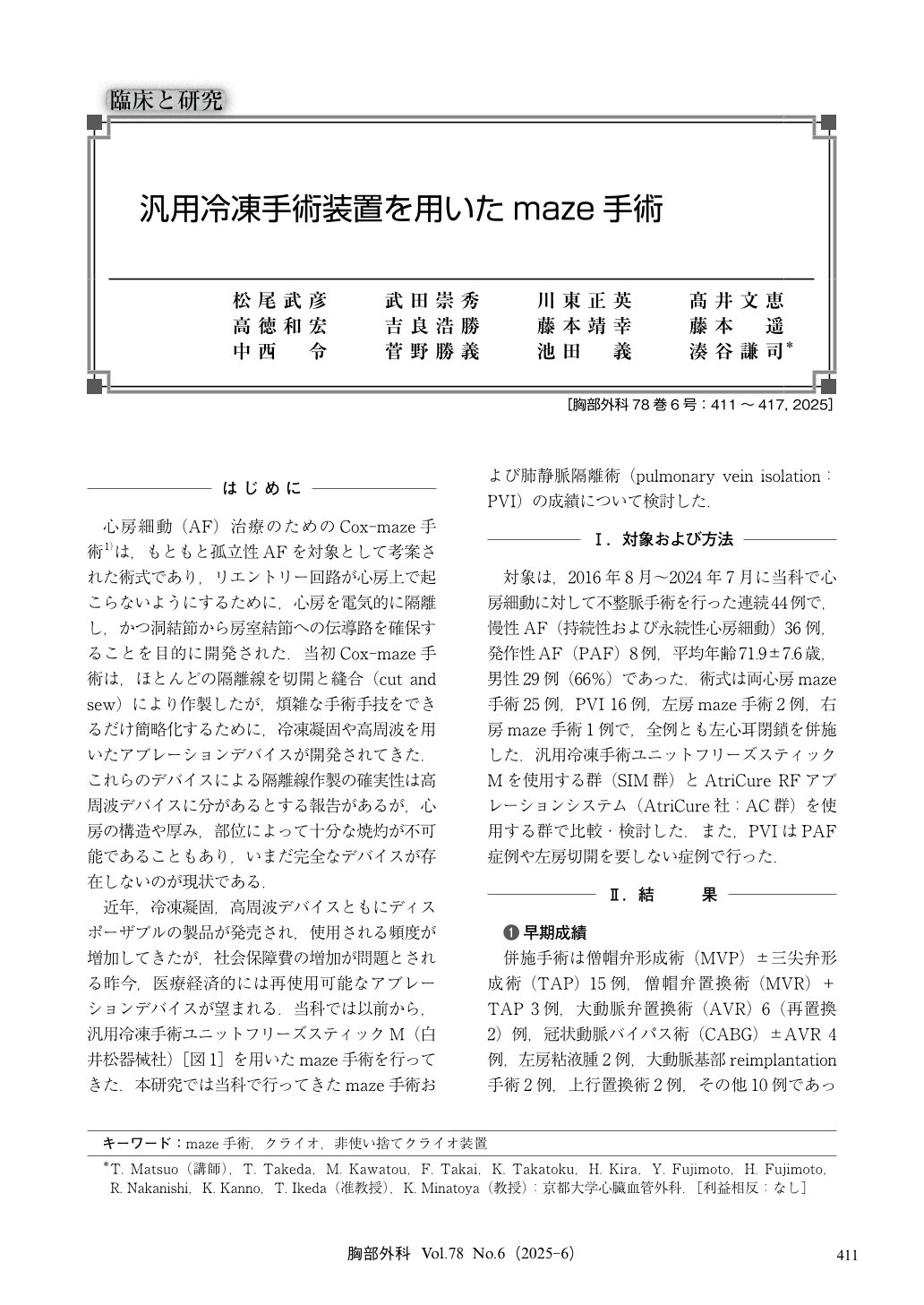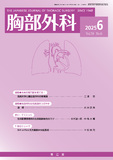Japanese
English
- 有料閲覧
- Abstract 文献概要
- 1ページ目 Look Inside
- 参考文献 Reference
心房細動(AF)治療のためのCox-maze手術1)は,もともと孤立性AFを対象として考案された術式であり,リエントリー回路が心房上で起こらないようにするために,心房を電気的に隔離し,かつ洞結節から房室結節への伝導路を確保することを目的に開発された.当初Cox-maze手術は,ほとんどの隔離線を切開と縫合(cut and sew)により作製したが,煩雑な手術手技をできるだけ簡略化するために,冷凍凝固や高周波を用いたアブレーションデバイスが開発されてきた.これらのデバイスによる隔離線作製の確実性は高周波デバイスに分があるとする報告があるが,心房の構造や厚み,部位によって十分な焼灼が不可能であることもあり,いまだ完全なデバイスが存在しないのが現状である.
Background:Maze surgery for atrial fibrillation (AF) has increasingly utilized disposable cryoablation and radiofrequency devices. However, reusable ablation devices are preferred for reducing healthcare costs. At our department, the general-purpose cryosurgical unit “Freeze Stick M” has been used for maze surgery and intercostal nerve block during left thoracotomy, effectively minimizing postoperative pain.
Patients and methods:Between August 2016 and July 2024, 44 patients underwent arrhythmia surgery for AF (36 chronic AF, 8 paroxysmal AF). The mean age was 71.9±7.6 years, with 66% males. Surgical procedures included biatrial maze (25 cases), pulmonary vein isolation (16 cases), left atrial maze (2 cases), and right atrial maze (1 case), all with left atrial appendage closure. Outcomes were compared between the SIM group (Freeze Stick M) and AC group (AtriCure).
Results:The 30-day mortality rate was 2.3%. Postoperative survival was 90.0% at 1 year, 81.0% at 3 and 5 years, and 67.5% at 7 years. AF-free rates at discharge were 76.2% (SIM) vs. 73.9% (AC). For chronic AF, AF-free rates at 5 years were 41.9% (SIM) vs. 38.5% (AC)(p=0.168).
Conclusion:The general-purpose cryosurgical unit “Freeze Stick M” performed similarly to the AtriCure device as a lesion-creation device.

© Nankodo Co., Ltd., 2025


